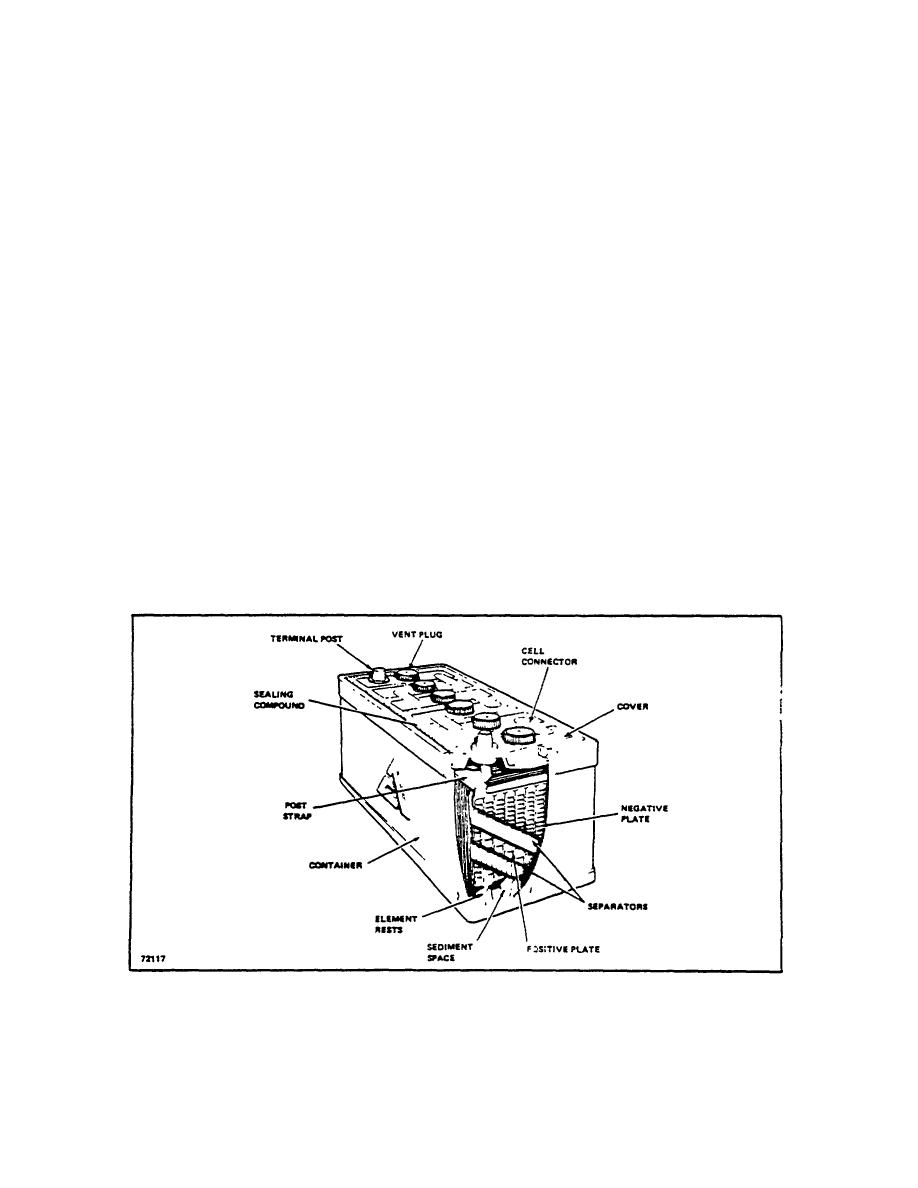 |
|||
|
|
|||
|
|
|||
| ||||||||||
|
|
 TM 10-3930-644-14 & P
TOPIC 1. BATTERY
A. GENERAL DESCRIPTION
plates of the positive group between the plates of the
negative group, Neg. Pos. Neg., etc. The negative
The lead-acid storage battery is an electrochemical
plate group always has one or more plates than the
device for converting stored chemical energy into
positive group. Separators have one ribbed side and are
electrical energy.
assembled with the ribs vertical and facing the positive
plate. In this position, the space between the ribs allows
Active materials within the battery react chemically to
better circulation of the electrolyte to the positive plates
produce a flow of direct current whenever cranking
and forms a channel by which normally loosened
motor or other current consuming devices are connected
particles of positive active material may reach the
into the battery circuit. This current is produced by
sediment spaces in the bottom of the cell.
chemical reaction between the active materials of the
plate and the sulphuric acid of the electrolyte.
A vent cap screws into a threaded hole located in each
cell cover. The cap serves two purposes. First, it closes
The internal construction of a lead-acid battery consists
the opening in the cell cover through which electrolyte
of the combination of positive and negative plates
can be checked and water added, if necessary, and
forming a cell. The plates consist of special active
second, it provides a means for the escape of gases
materials contained in cast grids of lead-antimony alloy.
formed during charging. The visual level fill is an aid to
Charged negative plates contain sponge lead, and
proper servicing. Electrolyte level should be maintained
charged positive plates contain lead peroxide. If the
by adding distilled water to the bottom of the filler hole.
positive and negative plates contact one another, a short
This gives a margin of safety against the dangers of low-
circuit is produced and the cell fails immediately. To
level operation. Overfilling should be avoided at all
prevent a short circuit between the plates, separators
times, since it causes loss of electrolyte which will result
are used. The cell is assembled by alternating the
in premature battery failure and poor performances
Electrolyte lost by overfilling causes excessive corrosion
of cables, connections and other equipment.
Figure 1-1. Battery (Typical)
R-146-1
3-71
|
|
Privacy Statement - Press Release - Copyright Information. - Contact Us |